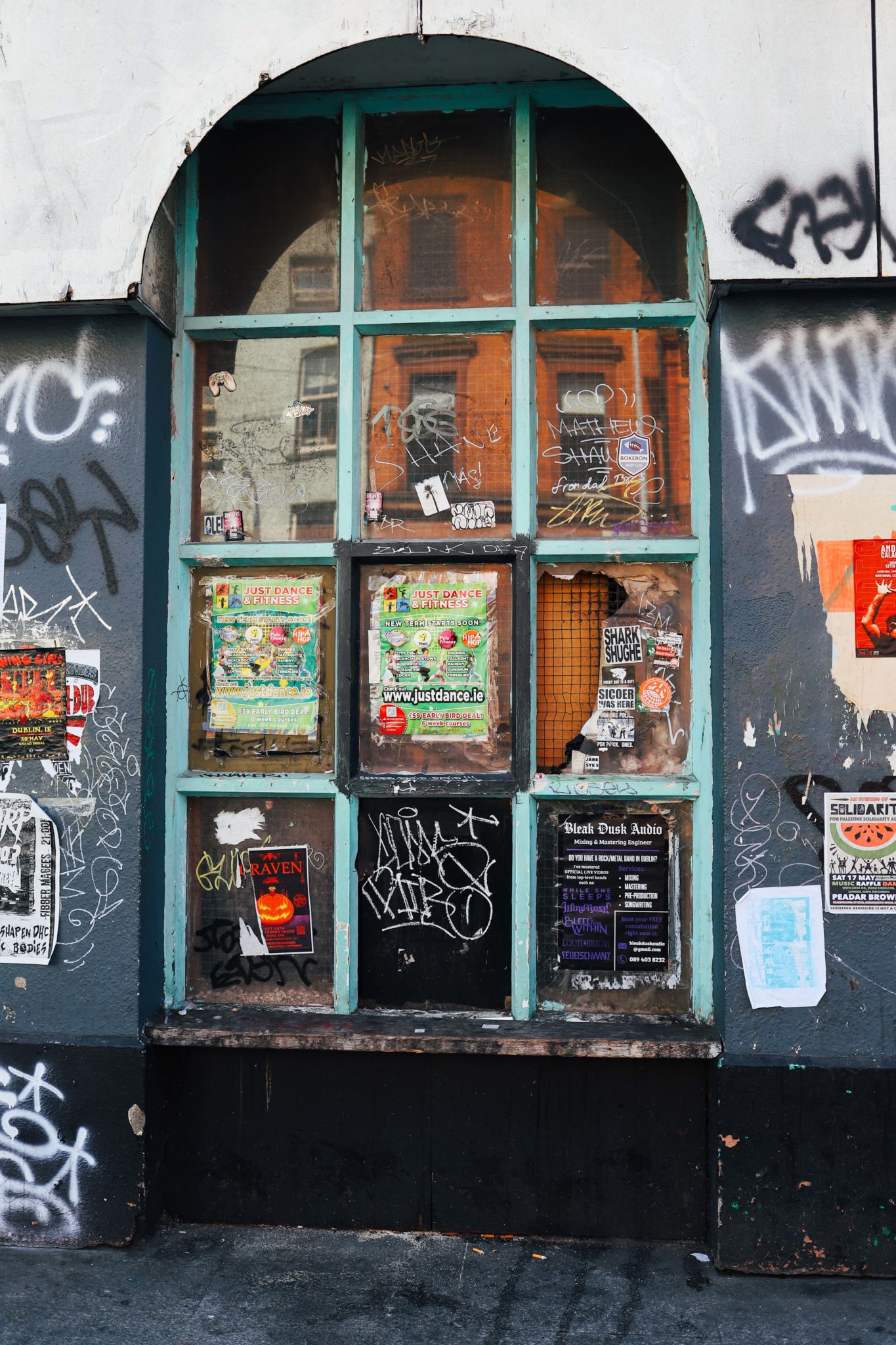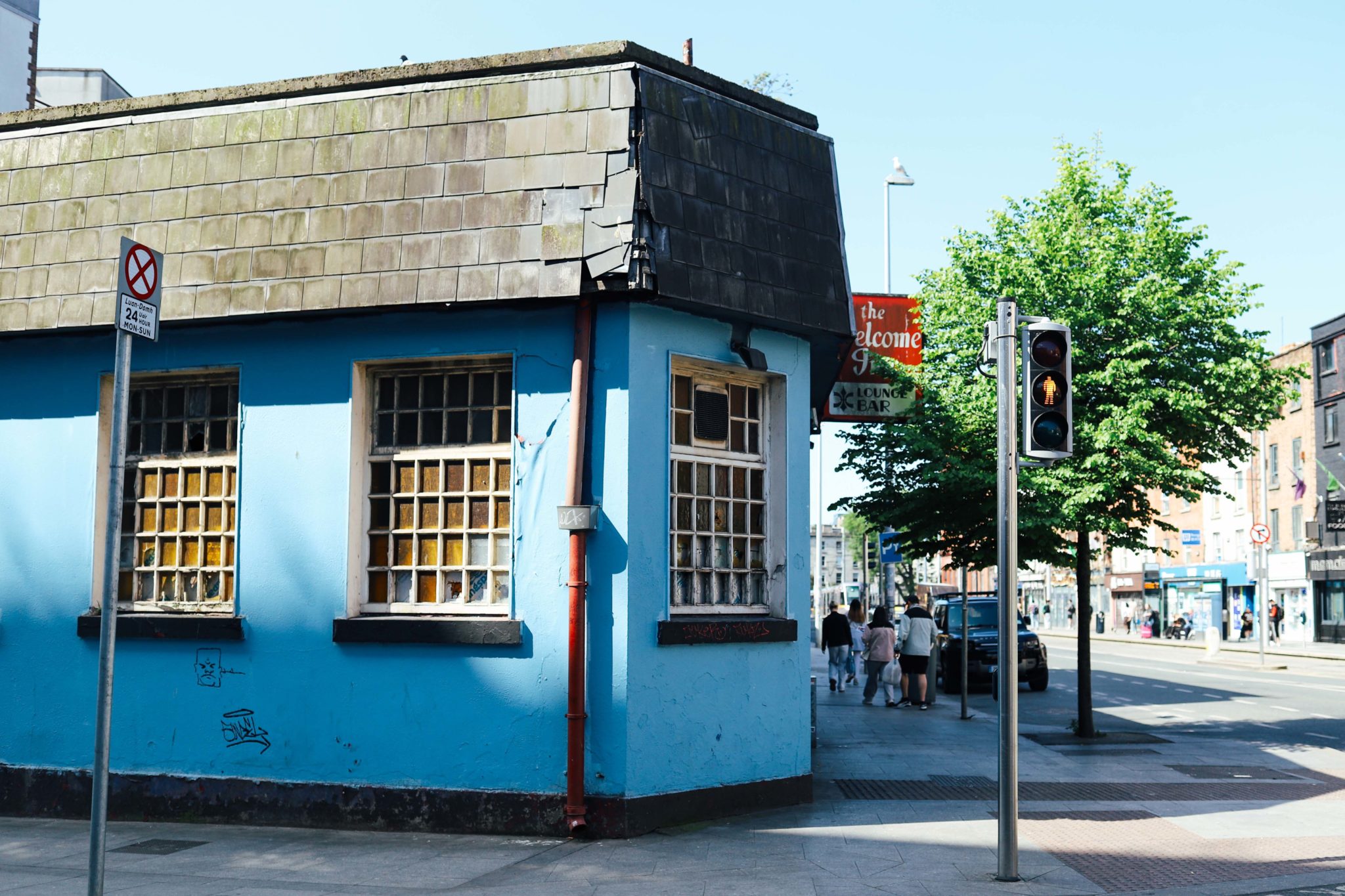- Opinion
- 25 May 25
Derelict Ireland: "When we came back to Ireland, we were shocked to find the levels of vacancy and dereliction in the middle of a housing crisis"

Riccardo Dwyer talks to experts to understand why Ireland is grappling with widespread dereliction, and discovers that some councils have taken a successful, proactive approach to reclaiming neglected properties.
Ireland has abandonment issues. Walk around any of our cities, towns or rural areas and you’ll see that they are peppered with vacant, neglected, and often completely derelict buildings. Ugly and unsafe, these sites also represent a wasted opportunity to revitalise communities and provide an essential resource.
In line with the litany of issues surrounding the housing crisis, it’s a blight sustained by failed policies, ‘light-touch’ regulation, cultural apathy, and a decades-long deference to property owners over and above community need.
A 2024 report suggests there are 163,433 “empty homes” in Ireland. These include 66,956 holiday homes, 34,000 short term lets, 30,246 underused commercial buildings with residential potential, and 20,413 officially registered derelict homes (though this final figure doesn’t account for the large number of unregistered sites).
These figures come from Anois, an organisation based out of Cork City and founded by Frank O’Connor and Jude Sherry, who returned to Ireland after years of working on policy, design and sustainability in organisations like the European Commission and UNIDO (United Nations Industrial Development Organization)
They couldn’t believe how bad things were here.
“We basically worked all over the world on policy practice,” says Frank O’Connor. “When we came back to Ireland, with our skills and knowledge, we were shocked to find the levels of vacancy and dereliction in the middle of a housing crisis and record high homeless numbers.
“There were kids passing our house every day, going to school from temporary accommodation in a local hotel, with no proper facilities for cooking or washing or anything. And on the way to school, they were passing a load of empty, derelict, vacant buildings - homes that could easily be turned around. So that was heartbreaking.”

Credit: Abigail Ring
Their response was to initiate #DerelictIreland, a social-media campaign cataloguing neglected properties and raising public consciousness of the issue, through art, activism, and data. They’ve since identified 700 derelict properties within 2km of Cork City centre alone – over seven times the official figure reported by the council.
“It wasn’t really being discussed,” O’Connor says. “It was something that was accepted culturally. It was normalised.”
At the heart of the issue lies a sort of paradox: in Ireland, it can pay to let buildings rot.
“The easiest way to earn wealth in Ireland is to have a property and do nothing with it,” Jude Sherry observes. “It goes up in value because we’re in a housing crisis. We looked at three different properties in Cork City, and based on their value five years ago, they went up 20 grand per year.”
Levies introduced in 1990 are meant to charge property owners 7% of a neglected site’s market value annually. These laws are often not enforced properly.
“It started off with a 3% levy if your property was derelict, and then it moved to 7%. We get a lot of people contacting us off the record from local authorities and the overall message they give us is that it was never taken seriously.”
Another common refrain they encounter is ‘the poor owner’.
“You get things like, ‘Oh, someone has an emotional attachment to the building’, ‘It’s been in the family for generations’, ‘They can’t afford to do anything,’” O’Connor says. “We’ve been social justice activists all our lives. For us, it’s about those kids in emergency accommodation and those people on the streets. They’re the people who need a room.”
“I think it’s a combination of our culture around ownership, but also a culture of not wanting to live in urban settings, small towns and rural villages,” Sherry adds. “People don’t see them as places to raise a family. They want to be in their big house in the countryside or the suburbs. It’s very American.”
OWNERS KNOW WE’RE SERIOUS
While most of Ireland struggles with dereliction, one corner of the country is tackling it head on, and successfully so.
For the past seven years, Limerick City and County Council have taken dereliction seriously, using laws already in place via the 1990 Derelict Sites Act to take ownership of 206 properties – 52% of all properties acquired across as Compulsory Purchase Orders under the act.
In 2017, the council allocated significant capital funding and established a dedicated team, who are central to their strategy by conducting on-site surveys, engaging with property owners, and managing each step of the process. Their main goal is to encourage the owner to develop their derelict site. If that fails for whatever reason, the council uses their powers to take it over.
“We don’t care who owns a derelict property, we will pursue it,” says Jayne Leahy from the Property Management team at Limerick County Council. “These properties are a blight on the local communities and it’s very important that they’re dealt with. Because we’ve been so active in the area and it’s obviously in the press, owners know we’re serious. Once they get a notification, they’re working on it. That’s where Limerick has won this round.”
It isn’t solely about penalising owners either. A community-focused approach, as well as grants and financial incentives, are crucial to Limerick’s method.
“Local councillors can ask us to look at properties if they’re detracting from their local area or local residents can contact the council too,” Leahy says. ”People locally tend to have better knowledge. In a lot of cases, maybe the owners have left or nobody even knows who owns it.
“The key to our success is that we’re out on the ground and working with and talking to people. There are a lot of schemes. The Vacant Property Refurbishment Grant, which was introduced in 2023 has been a huge success, not only in Limerick, but nationally, so there’s plenty of carrots as well.”
IT’S HAD A HUGE IMPACT
Taking the initiative has had a profound effect on communities in Limerick, turning local eyesores into viable, liveable houses.
“It’s been such a success for Limerick,” Leahy says. “Some properties go to the housing department, who will take them out of dereliction, develop them and use them to address the social housing needs.
“In other cases, we have developed some ourselves, under Rural Limerick Housing Development. In those cases, they would have been properties that were beyond the open market, and the level of work required meant that nobody in their right mind would take these properties on.
“Some of these, particularly two that we’re working on at the moment on the main street of Bruff, were in very poor condition and wouldn’t be financially viable for anyone else. We’re in the process of taking them out of dereliction and they will be two nice three-bedroom properties right on the main street. If the council hadn’t intervened, it would never have happened. So it’s had a huge impact, to see life being brought back into all these properties.”

Credit: Abigail Ring
RELATED

- Opinion
- 20 Nov 25
RTÉ to close 2XM, Pulse and more digital stations next month

- Opinion
- 18 Nov 25








